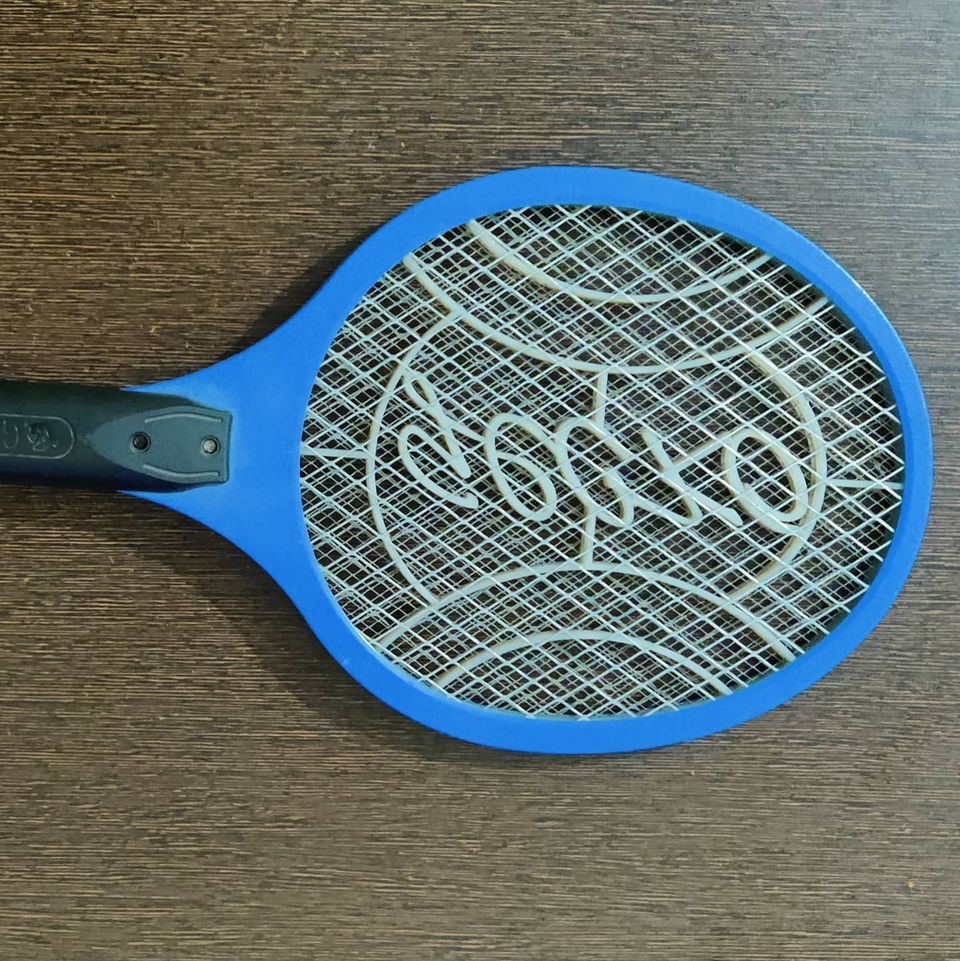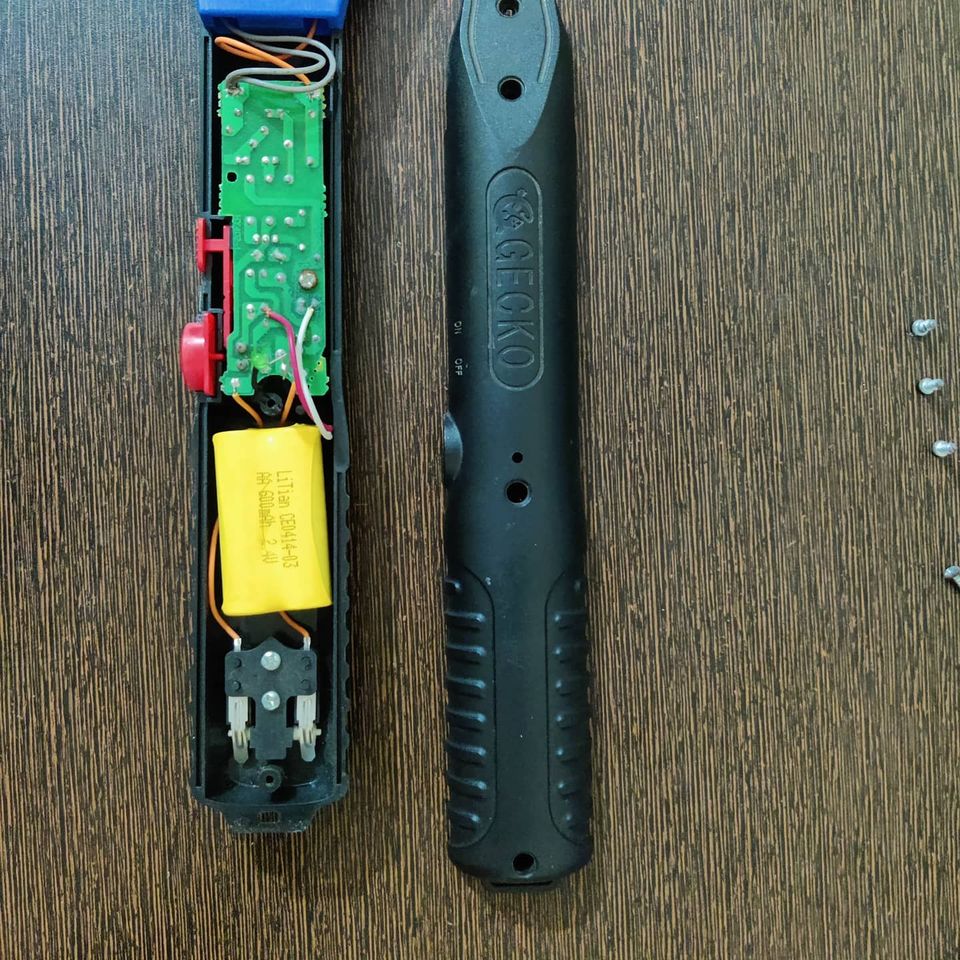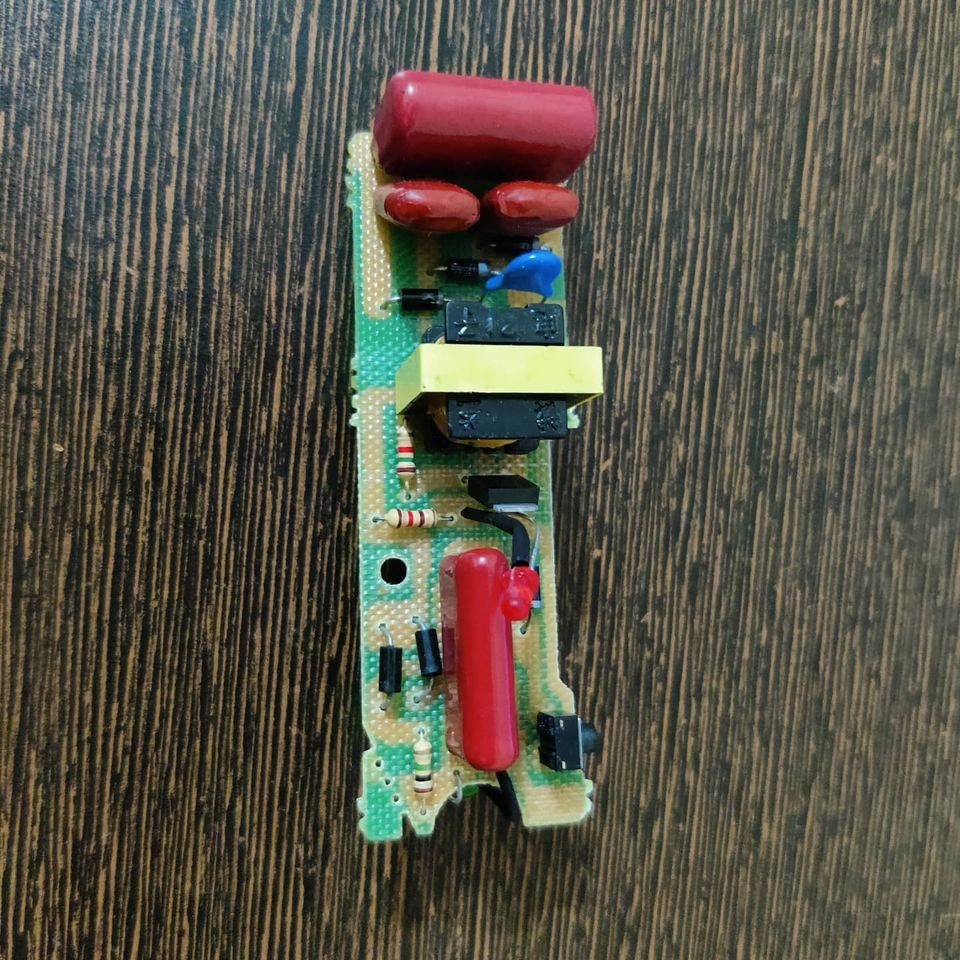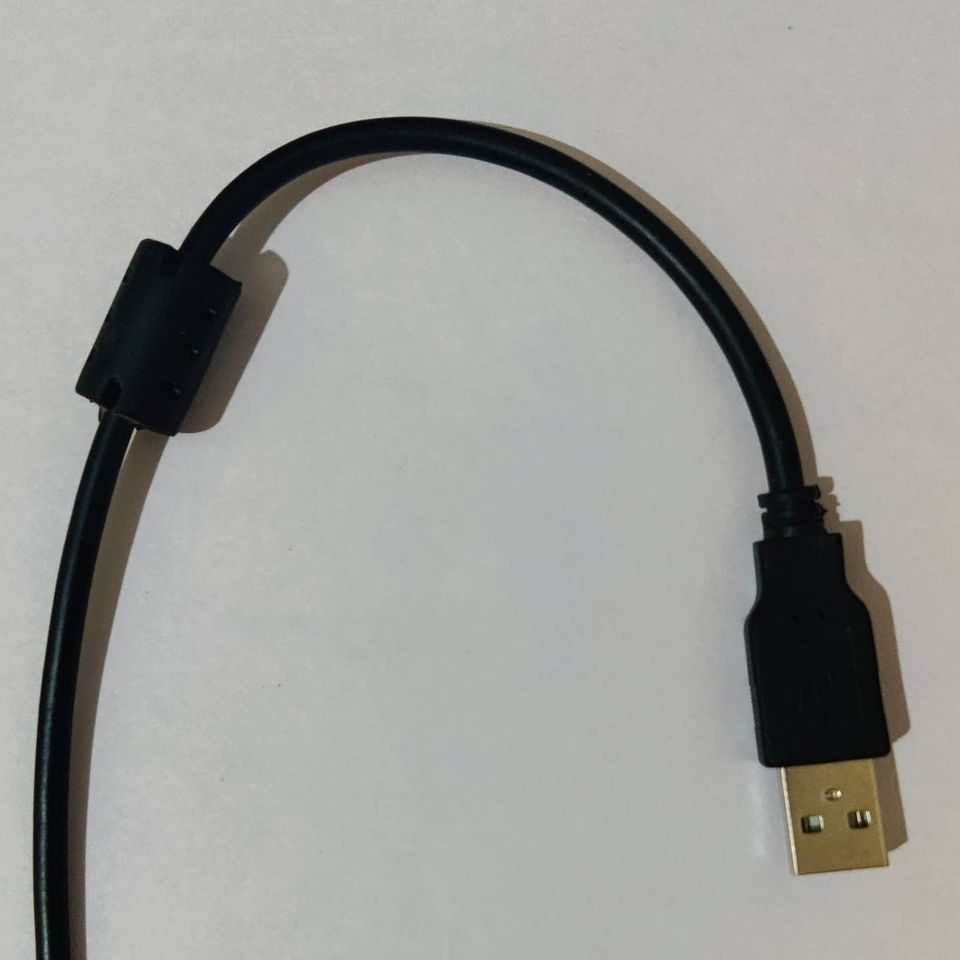
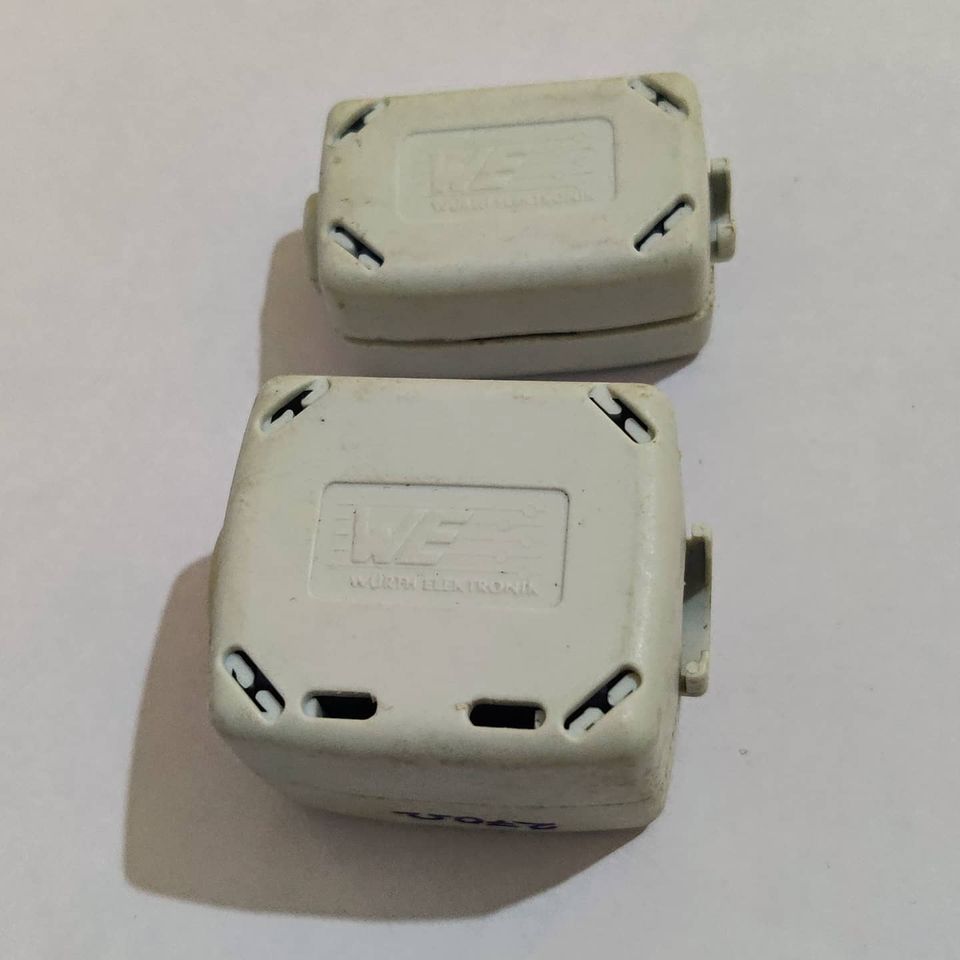
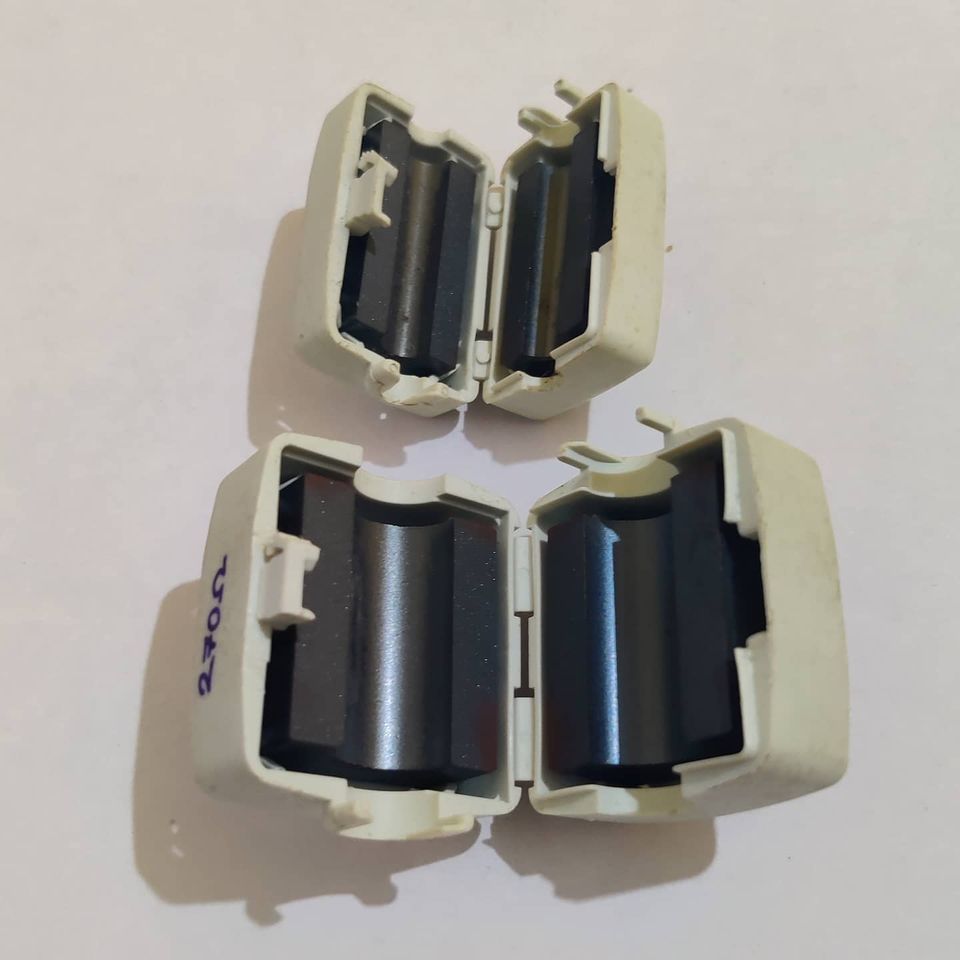
Most of you would have seen these thick cylindrical parts embedded in USB/Power/HDMI cables around your home, right next to the ports. These are ferrite cores. Basically made of a ferrite material and consists of 2 halves clamping together around a cable. It forms an inductor and is used to suppress high-frequency noise in a cable. You will mostly find it in good-quality branded cables. This becomes important in consumer electronic cables to prevent radiated emissions, to and from the devices it connects.
There are snap-on cores of different dimensions(Hence different impedance to the high-frequency signals). These become very useful for EMI engineers to suppress cable noise and pass the electronic certification. You try on different snap-on cores(sometimes looping the cable inside the core a couple of times) and whichever helps you pass the test goes in the final product(Just the ferrite core part gets embedded in the cable). Saves you a ton of time(and money) while testing in the EMI test labs.
